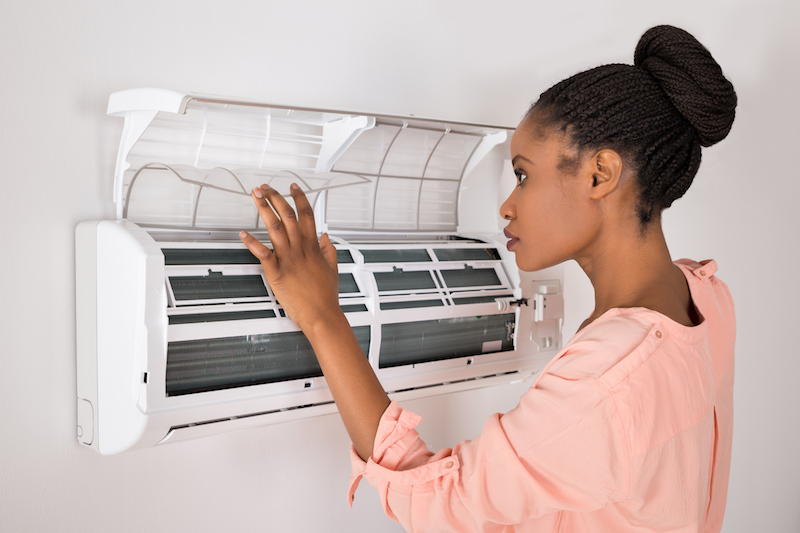
You shouldn’t have to sacrifice comfort or empty your wallet to keep your house at a refreshing temp during hot days.
But what is the best setting, exactly? We go over suggestions from energy experts so you can choose the best temperature for your residence.
Here’s what we advise for the most energy-efficient setting for air conditioning in Corpus Christi.
Recommended Thermostat Settings for Summer
Most households find using the thermostat at 72-73 degrees is ideal. However, if there’s a sizeable difference between your inside and outdoor temperatures, your electrical costs will be larger.
These are our suggestions based on the U.S. Department of Energy (DOE) and ENERGY STAR®.
While at home: 78 degrees. While that appears hot, there are ways you can keep your house cool without having the AC going all the time.
Keeping windows and window treatments shut during the day keeps cold air where it needs to be—inside. Some window treatments, like honeycomb shades or plantation shutters, are designed to give more insulation and enhanced energy conservation.
If you have ceiling fans in your home, the DOE says you can raise thermostat temps about 4 degrees higher without sacrificing comfort. That’s since they refresh with a windchill effect. Since they cool people, not areas, shut them off when you move from a room.
If 78 degrees still feels too warm at first glance, try doing a trial for approximately a week. Get started by upping your setting to 78 degrees while you’re at your house. Then, gradually decrease it while following the ideas above. You might be amazed at how comfortable you feel at a hotter temperature setting.
While away: 88 degrees. There’s no need to keep the air conditioning going all day while your house is empty. Turning the temperature 7–10 degrees warmer can save you an estimated 5–15% on your electrical expenses, according to the DOE.
When you get home, don’t be tempted to switch your thermostat colder than 78 to cool your residence more rapidly. This isn’t useful and often results in a higher AC expense.
A programmable thermostat is a helpful approach to keep your settings under control, but you need to set programs. If you don’t set programs, you risk forgetting to increase the set temperature when you take off.
If you’re looking for a hassle-free remedy, think over installing a smart thermostat. This thermostat works with with your phone, so it realizes when you’re at your house and when you’re out. Then it instinctively modifies temperature settings for maximum savings. How much exactly? Usually $180 yearly on heating and cooling, according to ENERGY STAR.
Another advantage of using a smart thermostat? You can use your phone to monitor and regulate temperature settings from almost anywhere.
While sleeping: Around 70 degrees. While ENERGY STAR suggests 82 degrees, that could be unbearable for many families. Many people sleep better when their sleeping area is chilled, so that’s why the National Sleep Foundation suggests 60–67 degrees. But that might be too cold, based on your clothing and blanket preference.
We recommend using a similar test over a week, moving your temp higher and progressively decreasing it to find the ideal setting for your house. On pleasant nights, you may discover keeping windows open at night and running a ceiling fan is a superior solution than operating the air conditioning.
More Approaches to Use Less Energy During Warm Weather
There are additional methods you can save money on air conditioning bills throughout hot weather.
- Buy an energy-efficient AC system. Central air conditioners only last about 12–15 years and get less efficient as they age. An upgraded air conditioner can keep your house comfier while keeping energy expenses low.
- Book regular air conditioner maintenance. Annual air conditioner maintenance keeps your system working properly and could help it operate more efficiently. It could also help lengthen its life span, since it helps technicians to discover small problems before they lead to a major meltdown.
- Replace air filters frequently. Follow manufacturer instructions for replacing your air filter. A clogged filter can lead to your system short cycling, or run too much, and increase your cooling.
- Inspect attic insulation levels. Almost 90% of residences in the U.S. don’t have enough insulation, according to the Insulation Institute. Many southern climates need 13–14” of attic insulation, while northern climates need 16–18”.
- Have your ductwork checked. Ductwork that has separated over time can leak cold air into your attic, walls or crawl space. This can lead to huge comfort problems in your home, such as hot and cold spots.
- Seal cracks, doors and windows. Keep muggy air where it should be by closing openings. You can also caulk or weather strip doors to seal more cold air inside.
Save More Energy During Warm Weather with Total Assurance AC & Heating
If you are looking to use less energy this summer, our Total Assurance AC & Heating experts can provide assistance. Get in touch with us at 361-446-6925 or contact us online for extra info about our energy-saving cooling products.

